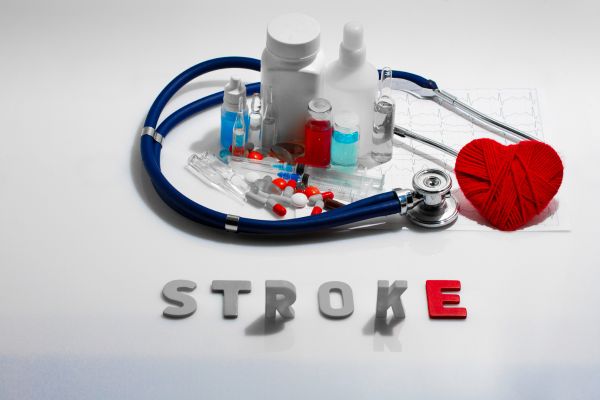A stroke occurs when a blood vessel that carries oxygen and nutrients to the brain is either blocked by a clot or bursts (or ruptures). This can damage the brain tissue which can eventually die. It is a medical emergency requiring a medical diagnosis and lab tests.
Dynafisio is a leading physiotherapy clinic in Gurgaon, specializing in comprehensive rehabilitation for individuals who have experienced a stroke. Our highly skilled and experienced team of physiotherapists is dedicated to maximizing recovery and helping patients regain their independence. With our expertise in stroke physiotherapy and a patient-centered approach, we are committed to helping individuals recover and regain their optimal level of function in Gurgaon.
.jpg)
Dr. Jyoti Arya, a renowned physiotherapist at Dynafisio, is recognized as one of the best stroke physiotherapy rehabilitation doctors in Gurgaon. With her extensive knowledge and expertise, she is dedicated to providing exceptional care to stroke survivors, helping them regain their independence and improve their quality of life. She believes in a holistic approach to stroke rehabilitation, combining her deep understanding of the complexities of stroke with evidence-based treatment methods. Her personalized treatment plans are tailored to each patient's specific needs, focusing on restoring mobility, improving balance, and enhancing overall functional abilities.
With her compassionate and patient-centric approach, Dr. Jyoti Arya works closely with stroke patients to develop customized exercise programs, incorporating manual therapy techniques and advanced therapeutic modalities. She empowers her patients by providing them with the knowledge and tools to manage their condition, enabling them to achieve optimal recovery. As a top physiotherapist in Gurgaon, Dr. Jyoti Arya not only treats her patients but also provides ongoing support and motivation throughout their rehabilitation journey. If you are searching for the best stroke physiotherapy rehabilitation doctor in Gurgaon, look no further than Dynafisio and Dr. Jyoti Arya. Experience expert care and personalized treatment that will help you restore function and regain your independence.

Clot buster medicine– Some specific strokes are treated using injection with a medicine known as alteplase. This medicine dissolves blood clots in the brain and restores the normal blood flow in the body giving it the name clot-busting.
Thrombectomy– This is an emergency procedure to treat stroke by removing blood clots and restoring the blood flow in the brain. It is effective in treating strokes caused by blood clots in the large artery of the brain.
Stroke can affect the physical abilities and cognitive skills of a person. It can temporarily or permanently damage the brain areas controlling body function. However, the brain can recover and daily activity or exercise can help in functional recovery.
Wrist curls– Sit on a chair and keep the arms on a rest with the palm facing upwards next, let the wrist dangle on the edge of the armrest and grasp some weight making slow controlled movements. You can bend the wrist towards the forearm and back down.
At DynaFisio, we pride ourselves on providing easily accessible and cutting-edge solutions to people suffering from impaired mobility and function. If you are a stroke survivor, visit DynaFisio Physiotherapy Clinic in Sector 42 Gurgaon today and experience holistic wellness with our experts.